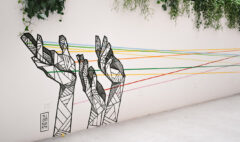When Vision Isn’t Quite Enough
Greetings. Yesterday I had the chance to visit the Terra Cotta Warrior exhibit at the National Geographic Society in Washington. If you're planning to be in D.C. between now and March 31st, you should definitely make the time to discover this amazing chapter in China's history.
For those of you who don't know their story, let's take a quick trip back to the year 210 B.C. when China's first emperor, Qin Shihuangdi, commissioned the creation of several thousand life-size figures to accompany him in the afterlife. They were an essential part of a massive underground cemetery or city complete with palaces, rivers, and all manner of splendid earthly objects. And these meticulously crafted warriors, generals, musicians, acrobats, strongmen, horses, and chariots would help to protect (and entertain) him and enable Qin to continue his rule long after death.
The Qin Dynasty itself last only 15 years, but in that time the emperor succeeded in conquering and uniting a set of warring states into the nation of China (which is actually named after him). He then went about the task of creating standardized systems for writing, weights, and measures in an effort to unify his "acquisitions" and make it easier to promote trade among them. He also played a major role in building the Great Wall of China. But Emperor Qin had less luck when it came to "standardizing" the way people thought, and his notion of burning the books and ideas of his conquests was not particularly popular. In fact, shortly after his death a rebellion would bring down his dynasty and make way for the emergence of the Han Dynasty which would last for more than four hundred years.
We win in life and in the "dynasty" business by combining remarkable vision with an openness to the ideas and genius of other people. After all, it's not easy to acquire other companies or nations. Maybe history is a valuable guide in building an enduring future. If so, what lessons will you and your colleagues learn in the year ahead?
Cheers!







